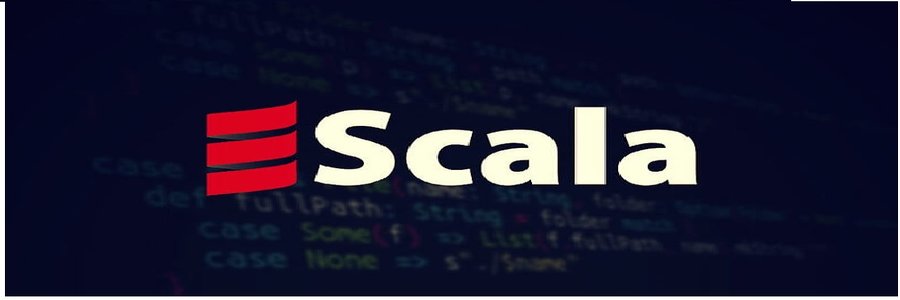Description
Introduction
Functional programming (FP) is a programming paradigm that treats computation as the evaluation of mathematical functions and avoids changing state and mutable data. Scala, a hybrid language, supports both object-oriented and functional programming, making it a powerful tool for developers. In this guide, we’ll dive into the functional programming concepts within Scala, focusing on how you can leverage them to write clean, concise, and scalable applications. By the end of this guide, you’ll have a solid understanding of key FP concepts and how to apply them effectively in Scala.
Prerequisites
To get the most out of this guide, you should:
- Have a basic understanding of Scala syntax and core concepts.
- Be familiar with basic programming concepts like variables, loops, and conditionals.
- Have an interest in learning about functional programming techniques.
Table of Contents
- Introduction to Functional Programming
1.1 What is Functional Programming?
1.2 The Principles of Functional Programming
1.3 Benefits of Functional Programming in Scala
1.4 Immutable Data Structures and Pure Functions - Functions as First-Class Citizens
2.1 Defining Functions in Scala
2.2 Higher-Order Functions(Ref: Scala and Apache Spark for Data Processing)
2.3 Function Composition
2.4 Currying and Partial Application
2.5 Anonymous Functions and Lambdas - Immutability in Scala
3.1 The Role of Immutability in Functional Programming
3.2 Using Immutable Collections in Scala
3.3 Creating Immutable Data Structures with Case Classes
3.4 Benefits of Immutability for Concurrency and Scalability - Pure Functions and Referential Transparency
4.1 What Makes a Function Pure?
4.2 The Importance of Referential Transparency
4.3 Avoiding Side Effects in Functional Programming
4.4 Benefits of Pure Functions in Testing and Debugging - Pattern Matching
5.1 Introduction to Pattern Matching in Scala
5.2 Matching on Data Structures(Ref: The Complete Data Structures and Algorithms Training)
5.3 Using Pattern Matching with Case Classes
5.4 Advanced Pattern Matching Features
5.5 Combining Pattern Matching with Option and Either Types - Option, Either, and Try: Handling Absence and Errors
6.1 Introduction to the Option Type
6.2 Using Option for Safe Value Handling
6.3 The Either Type for Handling Errors
6.4 Using Try for Exception Handling
6.5 Combining Option, Either, and Try with Pattern Matching - Monads and Functional Programming Concepts
7.1 What is a Monad?
7.2 Understanding the Monad Pattern
7.3 Working with Scala’s Option and Future as Monads
7.4 The Importance of FlatMap and Map Methods
7.5 Monads in Scala: Practical Examples and Use Cases - For-Comprehensions in Scala
8.1 Introduction to For-Comprehensions
8.2 Understanding Syntax and Functionality
8.3 Using For-Comprehensions with Option and Future
8.4 Composing Operations Using For-Comprehensions
8.5 Benefits of For-Comprehensions in Scala - Concurrency and Parallelism with Functional Programming
9.1 Concurrency in Functional Programming
9.2 Using Futures for Asynchronous Programming in Scala
9.3 Functional Concurrency with Akka Actors
9.4 Parallelism in Scala using Parallel Collections
9.5 Scaling with Functional Programming - Refactoring Imperative Code to Functional Style
10.1 Recognizing Imperative Code Patterns
10.2 Refactoring Loops to Recursive Functions
10.3 Replacing Mutable State with Immutability
10.4 Transforming Side Effects into Pure Functions
10.5 Best Practices for Writing Functional Scala Code - Building Functional Data Pipelines in Scala
11.1 Introduction to Data Pipelines
11.2 Using Scala Collections to Create Data Pipelines
11.3 Composing Functions for Data Transformation
11.4 Functional Programming with Akka Streams
11.5 Building Efficient and Composable Data Pipelines - Testing Functional Scala Code
12.1 Writing Unit Tests for Pure Functions
12.2 Testing Side Effects and Asynchronous Code
12.3 Property-Based Testing with ScalaCheck
12.4 Using Mocks and Stubs in Functional Testing
12.5 Continuous Integration for Functional Projects - Best Practices in Functional Programming with Scala
13.1 Following FP Principles for Cleaner Code
13.2 Keeping Code Modular and Composable
13.3 Leveraging Type Safety in Scala
13.4 Documenting Functional Scala Code
13.5 Avoiding Common Pitfalls in Functional Programming - Conclusion and Next Steps
14.1 Recap of Key Concepts in Functional Programming
14.2 Applying Functional Programming to Real-World Projects
14.3 Further Learning Resources and Tools for Scala Developers
14.4 Exploring Advanced Functional Programming Topics in Scala
Conclusion
Functional programming in Scala offers a robust approach to building clean, maintainable, and scalable applications. By embracing core FP concepts such as immutability, pure functions, and higher-order functions, you can write code that is easier to test, debug, and extend. Pattern matching, monads, and for-comprehensions provide powerful tools for managing complex data flows and error handling in a functional way. As you continue to explore Scala’s functional capabilities, you will be able to build more efficient, concurrent, and highly scalable applications that take full advantage of the functional programming paradigm.







Reviews
There are no reviews yet.